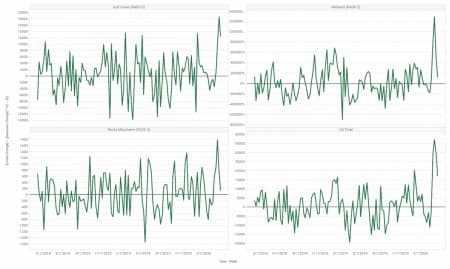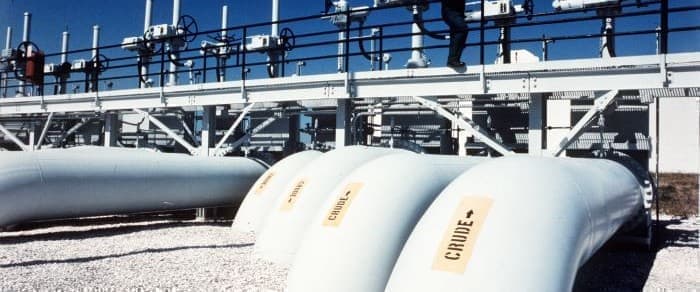Fears of running out of storage capacity drove oil prices down over $40 in single day, forcing sellers to pay their buyers to take the product, and these fears were not unfounded. Yesterday the EIA released the latest weekly installment of its authoritative data on liquid volumes stored in the United States, and the data paints an urgent picture.
Only about 3% of the stored oil volumes have historically resided on production leases while roughly half sits upstream of refineries. Since refineries can make storage space for crude by processing it and storing it as products, the system can hold about as much more oil as refined products waiting for shipment. It is safe to assume that storage capacity is no less than its recent high, but it is not clear how much more space may exist.
When social distancing locked down the US, stocks of crude were already rising again after swooning from an all-time high last summer. With driving season about to start, gasoline inventories were expected to come down. Then, for the three weeks ending April 10, stocks grew at the fastest rate recorded in the thirty years of history, outstripping the previous one-week record by at least 30%. The good news is that the week ended last Friday saw a significant reduction in the build rate overall.
Two of the three regions summarized by the EIA saw dramatic reductions in inventory builds, namely the areas containing the Bakken, SCOOP, STACK and Niobrara plays. Official information on production rates lags by months, but the drop suggests widespread shut-ins. Local purchase prices for physical crude dipped much sooner than futures prices did, and operators were signaled a much lower price weeks ago.
The region including the Permian and Eagle Ford plays, however, hardly slowed at all. Since so many pipelines lead to the processing centers in the same region, it is not possible to say for sure where the oil came from. Still, it seems that Permian and Eagle Ford producers may not have shut in as much production as producers in other basins.
Premium: 2 Stocks To Consider As Oil Nears $15
Either way, the Texas region maintained a breakneck build. Without further abatement, the region will hit its demonstrated maximum capacity in a little over two weeks from last Friday. Of course, shut ins will continue; it is the speed which matters.
Figure 1: Weekly change in oil storage (including refined products) for major producing regions and for the United States as a whole.

As volumes reach the rim of capacity, storage will become a juggling game, and we will find out exactly how much capacity has never been used before. Storage will not be perfectly efficient. On the other hand, never-before-used capacity is probably small. It is not clear exactly where the wall is, but the wall is still close, especially for the Gulf Coast.
Premium: The Oil Sector That Will Suffer The Most
Shutting in wells that are already producing at a loss will provide much of the solution, but the Strategic Petroleum Reserve appears to be deus ex machina. It has been drawn down over the last few years and currently boasts a vacancy for 92 million barrels. It is most directly connected by pipeline to production in Texas and Oklahoma, but oil from more distant basins can also find its way there. The speed of injection has clocked 2.1 million barrels per week, but true injection capacity is likely very much higher. It has, for example, demonstrated up to 6.0 million barrels of withdrawal in a single week.
To add insult to injury, 40 million barrels are currently en-route from Saudi Arabia. The Saudis targeted the US market with some of its deepest discounts when they declared the price war, and they managed to increase their shipments to the US by almost ten times that of recent averages. It is not clear how much of this total displaced other purchases, or whether there is currently more total crude en route to the shriveled market than in previous months.
For a country which still loaded about 15 million barrels into storage last week, it is time to pursue every option.
By Dwayne Purvis for Oilprice.com
More Top Reads From Oilprice.com:
- Oil Jumps After Trump Orders Navy To ‘’Shoot And Destroy’’ Iranian Gunboats
- Saudi Supertankers Stranded As Oil Price War Backfires
- The Worst Is Yet To Come For Oil Prices

















